Upgrading to a fresh macOS version, like macOS Sonoma, is typically a fun and exciting experience. We eagerly await new features, a fresh appearance, and solutions for old problems.
Yet, it can be frustrating when you upgrade and discover that macOS Sonoma runs slow after the update. If this occurs, you can apply several potential fixes, beginning with the simplest ones. Often, simply updating apps on your Mac can make a big difference.
However, you might need to inspect different aspects of your system and eliminate incompatible programs. Keep reading to learn how to fix the macOS Sonoma runs slow after an update error.
- ⏫Fix 1. Update Applications to Speed Up macOS Sonoma
- 🗑️Fix 2. Optimize Mac Performance via Empty Trash Bin
- 📈Fix 3. Quit Resource-Hungry Applications
- ✅Fix 4. Manage Startup Programs to Speed Up macOS Sonoma
- ⛔Fix 5. Turn off Stage Manager on macOS Sonoma
- 🧩Fix 6. Uninstall Incompatible Programs
- 🔍Fix 7. Rebuild Spotlight Index
- 💻Fix 8. Reset SMC/PRAM/NVRAM on macOS Sonoma
Sonoma Runs Slow after Update, Why
Slowdowns or crashes after macOS updates are nothing new to Mac users, and you've probably experienced problems with the MacBook slow after the Ventura update.
Sometimes, you might notice a more evident slowdown, making you wonder why your system isn't running faster with the new version of macOS Sonoma. After all, an upgrade is meant to optimize Mac performance.
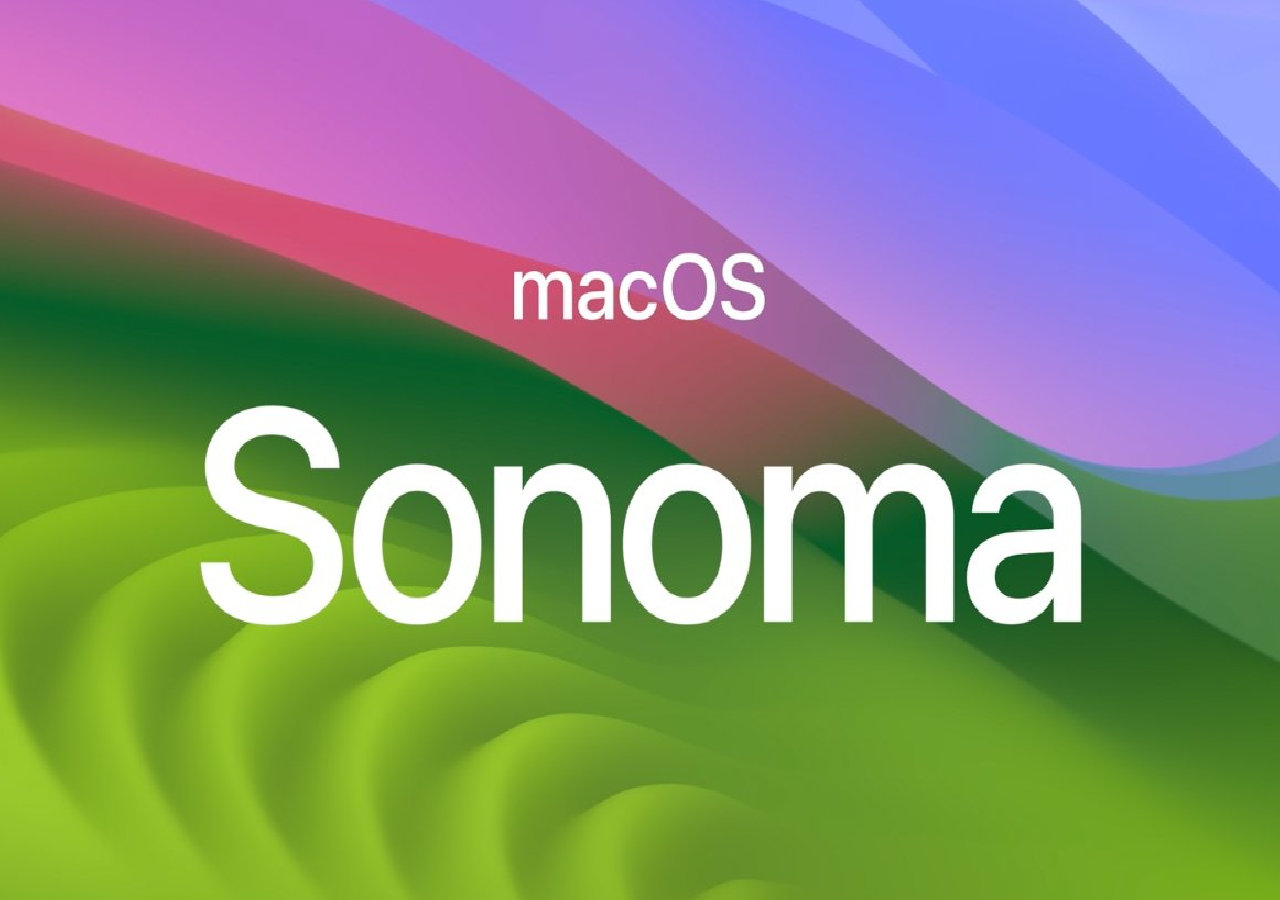
Some reasons why macOS Sonoma can run slow after an update include the following; check out the main macOS Sonoma issues:
- Resource-Hungry Processes: Multiple resource-intensive processes running simultaneously can strain your RAM and CPU, causing slow performance.
- Incompatible Apps: Some apps may not be optimized for Sonoma, which can slow down your system.
- Software Bugs: macOS Sonoma updates can sometimes introduce software bugs that affect performance.
- Insufficient Space: The upgrade process takes up space, and if your Mac has limited storage, there might not be enough room for smooth operation.
In most cases, the solution is simple and quick. However, some situations can be more complex, such as meeting specific system requirements, which we'll start by addressing.
How to Fix macOS Sonoma Runs Slow After Update
If your macOS is running slow after updating to Sonoma, don't worry. You can take various steps to increase the speed of macOS Sonoma on your Mac.
To avoid data loss after fixing the problem, it's suggested that you back up your essential data using Time Machine or the all-in-one data recovery software EaseUS Data Recovery Wizard for Mac Pro.

Back Up Your Mac and Never Lose Data
Back up and restore your MacBook/iMac without Time Machine, iCloud, or external hard drives.
We've arranged the solutions based on their ease of implementation and effectiveness in speeding up Sonoma. Let's cut to the chase!
Fix 1. Update Applications to Speed Up macOS Sonoma
When a new macOS version is released, developers usually update their apps to work better with the new system. If you haven't updated your apps to the latest versions, it could be a reason for your Mac to run sluggishly.
You can update your applications from the App Store through the Updates section. To update other apps:
Step 1. Enter the App Store on your Mac. Go to the app's name menu.
Step 2. Choose the option to check for updates.
Sometimes you may encounter the App Store unresponsive situation; this article can help you to solve this problem effectively.
Fix App Store Not Working on Mac: 5 Quick Solutions and 4 Practical Fixes
This article discusses how to fix the app store not working on macOS Monterey/Vnetura/Sonoma. Read more >>
Fix 2. Optimize Mac Performance via Empty Trash Bin
A common reason for a slow Mac is insufficient storage space. The upgrade process uses up some space, and afterward, there might not be enough room for your Mac to run other applications smoothly. Therefore, it's advisable to create more space on your Mac.
The best way to free up storage space is to "Empty Trash" or force empty Mac Trash. Check out the following steps:
Step 1. Hit the Apple logo in the menu bar, and select "About this Mac".
Step 2. Select "Storage > Manage".
Step 3. Turn on "Empty Trash Automatically", which will clean up items in the Trash bin after 30 days.

Cleaning it up manually can be time-consuming and demanding. Also, manual cleaning can't provide the thorough cleaning results that Mac cleaning tools can deliver. Therefore, it may happen that you delete the file, but the Mac's storage space remains unchanged.
Delete Files Mac But Still No Space: 4 Fixes
This article will help you to get rid of the problem of deleted files on Mac but still no space. Read more >>
Fix 3. Quit Resource-Hungry Applications
Resource-hungry tasks can significantly reduce your Mac's speed. If you run too many of them simultaneously, it could lead to crashes and overheating. Therefore, avoid running too many resource-hungry tasks at once.
You can quickly identify and stop these tasks using the Activity Monitor. Here's how to do it:
Step 1. Launch "Activity Monitor" using "Launchpod" or "Spotlight".
Step 2. Check the processes listed under "CPU and Memory" to identify any abnormal ones.
Step 3. Tap on the abnormal process, then select the "Quit" or "Force Quit" button to stop it.
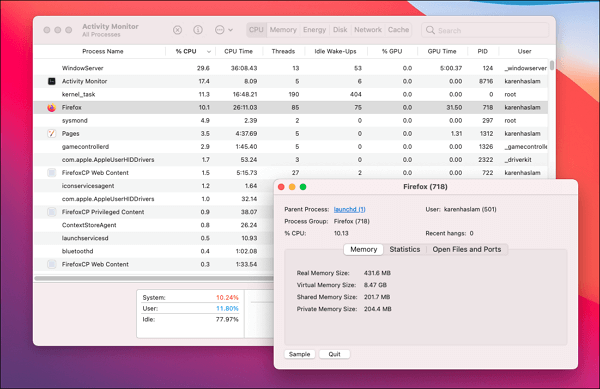
If the "Force Quit" button not working on your Mac, don't worry! Read this article to solve your problem.
Force Quit Not Working on MacBook Pro/Air
This article discusses several methods to force quit an application you want. Read more >>
Fix 4. Manage Startup Programs to Speed Up macOS Sonoma
If your Mac starts slowly, it might be because many apps launch with it. To save time, you can disable the apps you don't need to start automatically. Here's how:
Step 1. Tap the "Apple" icon, and hit "System Preferences".

Step 2. Choose "User & Groups > Login Items".
Step 3. Find the applications you don't want to start during the startup.
Step 4. Select the apps and click the "(-) button" at the bottom to remove them from the startup list.

Share this article on social media to help others learn more about how to fix macOS Sonoma running slow after the update.
Fix 5. Turn off Stage Manager on macOS Sonoma
If you're using multiple applications simultaneously, it's best to avoid Stage Manager. When you multitask with Stage Manager, it displays previews of all the apps not currently in use.
This consumes computer resources. Some users say that Stage Manager can use up a significant amount of RAM, which might lead to Mac slowdowns.
If you're still facing speed issues, you can turn it off for a while and see if there's a change. You can turn it back on if you notice that the Stage Manager isn't the issue. To turn off the Stage Manager:
Step 1. Launch "System Preferences" by tapping the "Apple" icon at the top left corner of your screen and hit "System Preferences".
Step 2. In the left sidebar of System Preferences, choose "Desktop & Dock".
Step 3. Scroll down the right-side panel until you locate "Stage Manager".

Step 4. Toggle the switch to turn off "Stage Manager".
After completing these steps, check your system's speed. If you don't notice an immediate improvement, consider restarting your system to ensure a complete reset and removing any related processes from memory.
Fix 6. Uninstall Incompatible Programs
Your Mac might run slower in Sonoma if some apps need an update. Often, these apps still need to be optimized for Sonoma, but updates are usually on the way.
Sometimes, one of these apps is running without you realizing it. It could have started when your Mac booted up. To find the troublesome app:
Step 1. Press "Option + Command + Esc" simultaneously. This opens the "Force Quit Applications" window.

Step 2. Choose each app listed and click "Force Quit", and you can select all by holding "Shift" and clicking each one.
If your MacBook Pro speeds up after this, it means one of these apps might be the issue. To identify it, you need to start each app individually and see which causes the slowdown.
After identifying the troublesome app:
- You can either stop using it or wait for an update that resolves the issue.
- You might also reach out to the app's creator to tell them about your issue, and they can give you a solution.
Remember to be careful when uninstalling software, and double-check if removing an essential app. Even after uninstalling an incompatible app, find replacements compatible with macOS Sonoma.
Fix 7. Rebuild Spotlight Index
When you upgrade to macOS Sonoma and start your Mac for the first time, Spotlight has to rebuild its index. This might cause your Mac to appear slower than usual. In such situations, be patient and allow Spotlight to finish its work.

Fix 8. Reset SMC/PRAM/NVRAM on macOS Sonoma
Resetting the SMC can solve severe problems and enhance the speed of your Mac. Problems such as rapid battery drain, sluggish performance in macOS Sonoma, and specific hardware issues can be resolved by resetting the SMC:
Step 1. Switch off your Mac.
Step 2. Remove the cable from your power source.
Step 3. Wait for about 8 minutes and restart normally.
This is a good option when your Mac is acting strangely. It's a harmless action that can potentially speed up macOS. Here are the steps to reset NVRAM/PRAM:
Step 1. Turn off your Mac.
Step 2. Tap the "Power button" then hold "Command+Option+P+R" before seeing the gray screen.
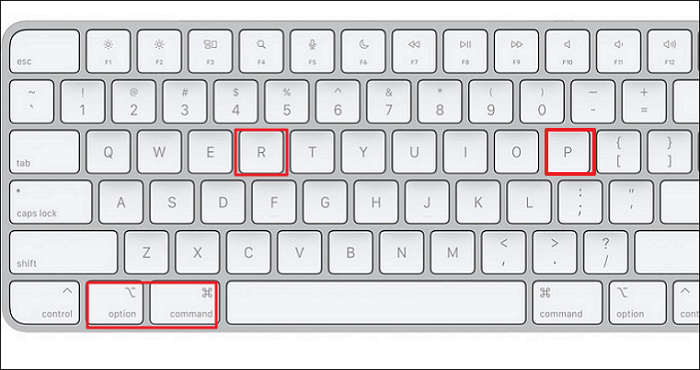
Step 3. Keep holding these keys until your Mac restarts.
Step 4. Release all the buttons and restart your Mac again.
👍Extra Tip: Avoid Data Loss after macOS Sonoma Update
Creating backups for your important files, videos, and documents is essential to prevent data loss. It is frustrating to lose data for various reasons, such as accidental deletion without a backup, macOS Sonoma updates, and virus attacks.
System crashes, hardware failures, unexpected shutdowns, and human errors are other causes of data loss. This is why it's crucial to establish a backup system before addressing the issue.
If you ever experience data loss, you might wonder how to recover it. If this is the case, the powerful Sonoma data recovery software EaseUS Data Recovery Wizard for Mac is an excellent solution to help you retrieve your data in different data loss situations and recover deleted files on macOS Sonoma. Whether you've accidentally emptied your Mac's Trash or lost a single Office Word document, this tool can assist in recovering your valuable files.
Check out the following steps to recover the lost or deleted data from the backup:
Step 1. Launch EaseUS Data Recovery Wizard for Mac when you are ready to extract data from a disk image. Choose "Disk Backup" in the sidebar, and click "Recover" > "Next".
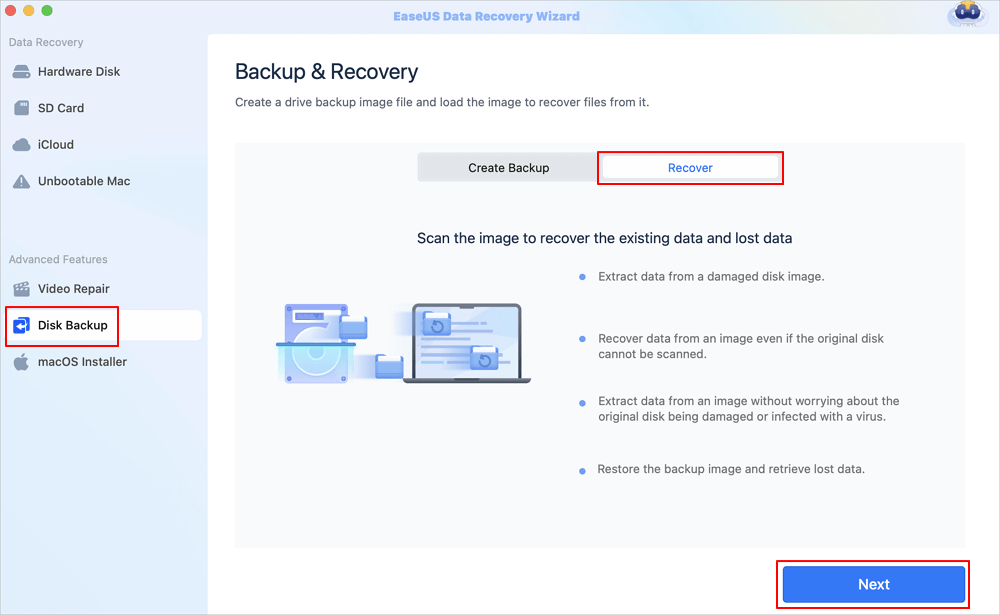
Step 2. Find the DMG file you have created before, and click "Open". If you save the disk image on an external hard drive, you need to connect the backup disk to your iMac/MacBook.
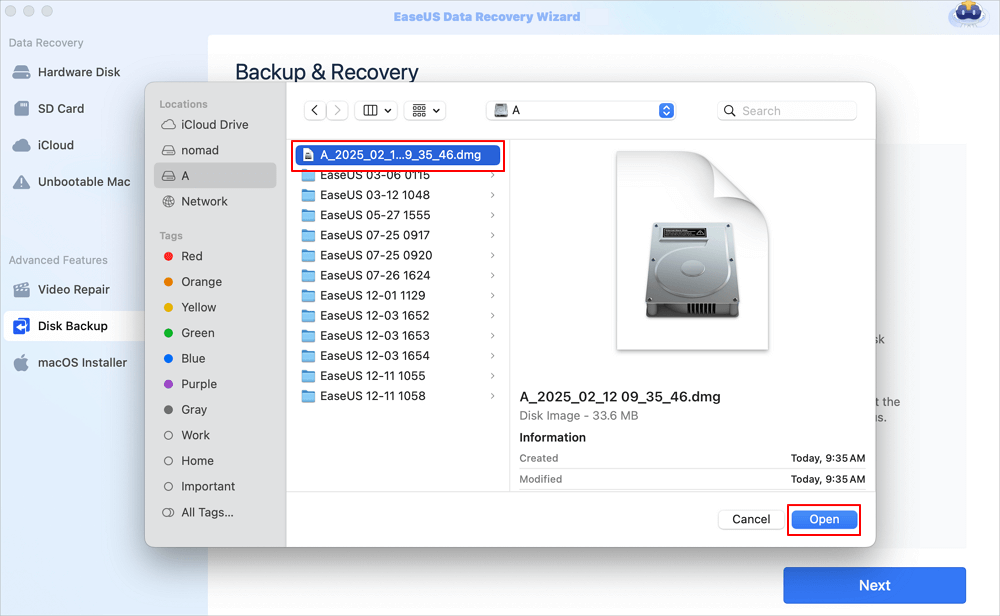
Step 3. EaseUS data recovery software will start scanning immediately and you can filter the lost files on the left side of the window. Choose all the photos/documents/videos/emails you want to recover, and click "Recover". You are allowed to save your files to local/cloud, and you even restore files to iCloud by clicking the "Save" button.
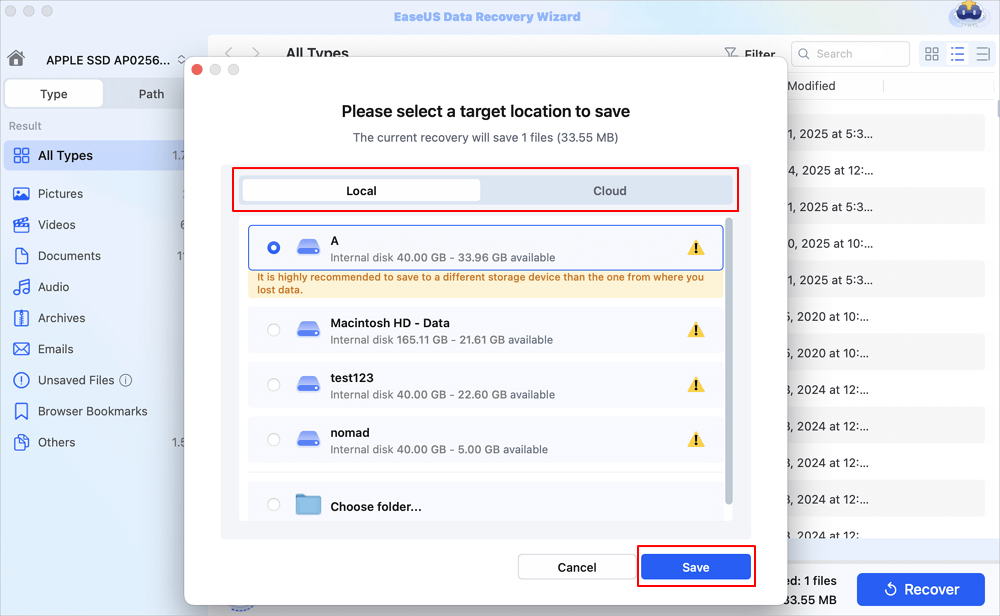
Conclusion
Getting a new macOS is usually pretty exciting! It can almost make your Mac feel brand new. But every now and then, we run into unexpected issues, like our Macs slowing down after we install the new macOS.
Before installing new updates, creating backups is vital to avoid losing crucial data. However, you can sometimes run into issues that can lead to data loss without a backup.
If this happens, you can rely on EaseUS Data Recovery Wizard for Mac for help when recovering lost music files, photos, documents, emails, and videos within a few minutes.
Sonoma Runs Slow After Updating FAQs
Here are some commonly asked questions when macOS runs slow after update:
1. Why is my Mac running slow after the Sonoma update?
If you're experiencing a slow performance with macOS Sonoma, it's probably because it's using more of your Mac's CPU and GPU power. The additional resources required for all the new features and enhancements in Sonoma mean that some Macs capable of running Ventura may not be suitable for Sonoma.
2. Why is my Mac so slow after the macOS Ventura update?
Installing the most recent macOS Ventura update on your Mac can decrease performance because this new build comes with some problems and other issues. Furthermore, apps and services are still being fine-tuned for the new operating system, which could result in performance problems for your system.
3. Why are the apps not working on my Mac Sonoma?
Several factors can contribute to specific applications not functioning correctly in macOS Sonoma. It could be that the app requires an update to be compatible with macOS Sonoma, but the developer hasn't released one yet, or you haven't installed it. Another reason could be corruption in some of the files associated with the app.
Was This Page Helpful?
Brithny is a technology enthusiast, aiming to make readers' tech lives easy and enjoyable. She loves exploring new technologies and writing technical how-to tips. In her spare time, she loves sharing things about her game experience on Facebook or Twitter.
Related Articles
-
PC Stuck on BIOS Screen - How to Fix?🔥
![author icon]() Jerry/2024-02-21
Jerry/2024-02-21 -
How to Format SD Card on GoPro [Quick Solutions]
![author icon]() Cici/2024-01-16
Cici/2024-01-16 -
How to Fix Windows 10 Stuck at Getting Files Ready for Installation
![author icon]() Brithny/2024-01-11
Brithny/2024-01-11 -
How to Fix Zsh: Command Not Found: Python [with Video]
![author icon]() Jaden/2024-01-11
Jaden/2024-01-11
EaseUS Data Recovery Services
EaseUS data recovery experts have uneaqualed expertise to repair disks/systems and salvage data from all devices like RAID, HDD, SSD, USB, etc.



